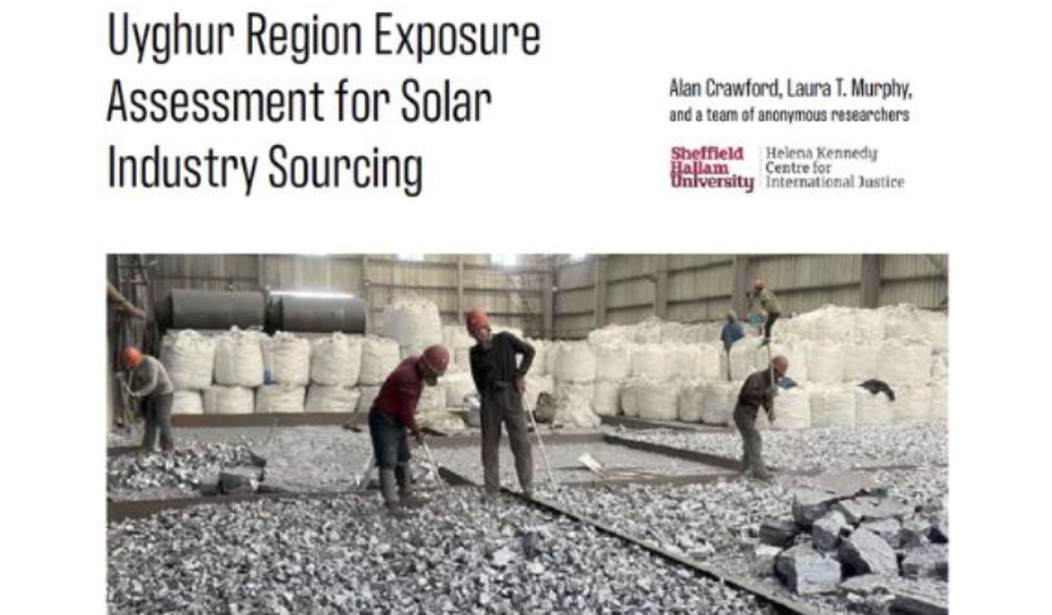I have nothing against solar power or for that matter electric vehicles. I think each of them fits into a genuine market niche, and if approached realistically they will play a role in the economy for the indefinite future.
For instance, I see solar as a useful tool for people who want to live off the grid. With a large enough energy storage system and access to emergency backup power, I think solar power could be great. A solar array on a roof with batteries could reduce one’s reliance on the grid and provide backup power during power outages, although I haven’t worked out the cost/benefits of solar vs. backup generators.
I’d love to have a luxury 5th-wheel RV loaded up with batteries and tons of solar panels to make short-term off-grid living comfy! I’ve even looked into what it would take to do it.
But the plunging price of solar panels is at least partly an illusion, although a useful one for opponents of fossil fuels. Solar panel production is highly dependent upon Chinese supply chains, and those Chinese supply chains are often using Uighur slave labor.
People say that what reduced the cost of solar panels was tech innovation, but it wasn't. It was Chinese government subsidies, coal, and forced labor. This issue should transcend politics. It's immoral to import products made in such horrific conditionshttps://t.co/IaAM9gmq1c pic.twitter.com/JF8yaVC2Iw
— Michael Shellenberger (@shellenberger) August 3, 2023
The economic benefits of solar have always been exaggerated, but it is undeniable that prices have in recent years dropped like a rock. The reliability is not great, and often the true cost of solar power is hidden by the cost of reliable backup generation, but the raw cost of each watt of electricity generated by a panel has been dropping.
Slave labor can do that for you.
Global supply chains for solar panels have begun shifting away from a heavy reliance on China, in part because of a recent ban on products from Xinjiang, a region where the U.S. government and United Nations accuse the Chinese government of committing human rights violations.
But a new report by experts in human rights and the solar industry found that the vast majority of solar panels made globally continue to have significant exposure to China and Xinjiang.
The report, released Tuesday, also faulted the solar industry for becoming less transparent about the origin of its products. That has made it more difficult for buyers to determine whether solar panels purchased to power homes and electricity grids were made without forced labor.
The analysis was done by Alan Crawford, a solar industry analyst, and Laura T. Murphy, a professor of human rights and contemporary slavery at Sheffield Hallam University in England, along with researchers who chose to remain anonymous for fear of retribution from the Chinese government. The London-based Modern Slavery and Human Rights Policy and Evidence Center provided funding.
The largest solar panel manufacturers in the world are able to sell their inexpensive panels because of where they are located–and that is right where slave labor is made available to them by the Chinese government.
Western governments have made quite the show of trying to get solar panel manufacturing weaned from its dependence on Chinese panels and raw materials, but it’s a tall task and little progress has been made.
And, of course, the Western obsession with building solar capacity at a rate that the market cannot provide without Chinese involvement, it’s basically impossible. As usual, the rhetoric is all unicorns and rainbows, but the reality is dark and unpleasant to explore.
The solar industry has come under stiff criticism in recent years for its ties to Xinjiang, which is a key provider of polysilicon, the material from which solar panels are made. The region produces roughly a third of both the world’s polysilicon and its metallurgical-grade silicon, the material from which polysilicon is made.
As a result, many firms have promised to scrutinize their supply chains, and several have set up factories in the United States or Southeast Asia to supply Western markets.
The Solar Energy Industries Association, the industry’s biggest trade association, has been calling on companies to shift their supply chains and cut ties with Xinjiang. More than 340 companies have signed a pledge to keep their supply chains free of forced labor.
But the report found that major global companies remain likely to have extensive exposure to Xinjiang, and potentially to forced labor, calling into question the progress. The report rated the world’s five biggest solar manufacturers — all with headquarters in China — as having “high” or “very high” potential exposure to Xinjiang.
We would all love to live in a world with plentiful, reliable, and inexpensive energy produced by the sun, charging our nearly silent and comfortable electric vehicles that go 600 miles per charge and recharge in 7 minutes, but the fact is that we don’t live in that world. We live in a world where we have to make difficult choices between suboptimal choices. We try to maximize benefits, minimize costs, and ensure that we don’t sacrifice morality and ethics while doing so.
The only way to make these choices rationally is through an honest evaluation of all the variables, not overhyped rhetoric that exaggerates and diminishes facts in order to create a false narrative.
That is the MO of the carbon-free fanatics.
The push for maximizing solar and wind power is being pushed by fanatics who, often, benefit from producing solar and wind power infrastructure. More nuclear and hydropower, backed up by natural gas peaking power plants is the most rational generating system we can build right now. Keeping coal plants open while we get there and in the places where it makes the most sense is also rational, although I am less enthusiastic about the long-term future of coal than many of my friends.
We need to stop the hype and focus on practicalities. Unfortunately, the Left and the rest of us have competing and incompatible goals. The Left is pushing “degrowth,” and less power production is actually a goal of theirs. Fewer people, less consumption. Most of us want an expanding economy and technological progress.
Closing reliable power plants makes sense if you want degrowth, and “renewable” energy is a good way to convince people you are replacing that power-generating capacity without really doing so. It creates an incremental but inevitable reduction in total production.
In the meantime, though, the Uighurs are paying a high price for the “moral” principles of the envirocommunists.








Join the conversation as a VIP Member